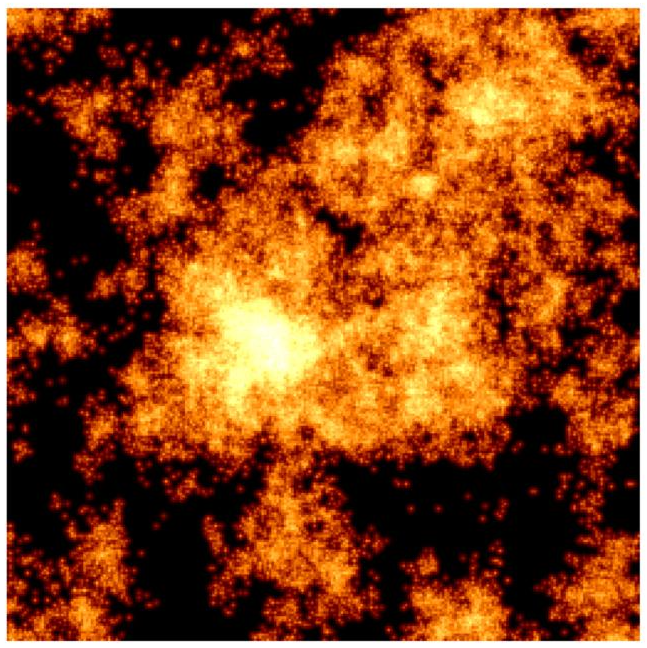Glass is fascinating because, even though it seems transparent and rigid, it is a complicated material. When a liquid becomes glass as it cools down, its behavior changes a lot, which gives it special qualities.
 Map of the spatial relaxation in a two-dimensional liquid model. Brighter regions indicate locations where particles moved significantly during some time interval, in dark regions little motion occurred. This image reveals the fractal nature of the relaxation process, shaped both by thermal fluctuations and elastic interactions. Image Credit: Tahaei et al., 2023, Physical Review X.
Map of the spatial relaxation in a two-dimensional liquid model. Brighter regions indicate locations where particles moved significantly during some time interval, in dark regions little motion occurred. This image reveals the fractal nature of the relaxation process, shaped both by thermal fluctuations and elastic interactions. Image Credit: Tahaei et al., 2023, Physical Review X.
Scientists have been trying to understand the “glass transition” process for many years. One of the interesting things about it is the appearance of “dynamical heterogeneities.” As the liquid gets colder and gets closer to becoming glass, the way things move in it becomes more connected and sporadic.
In a recent study, scientists have put forward a new way of thinking about why glass-forming liquids show these strange dynamical heterogeneities. They suggest that as these liquids change and become glass, they do so through small local movements that affect each other like a kind of elastic interaction.
By studying how these local movements, elastic interactions, and temperature changes work together, the researchers have come up with a complete theory to understand how these complicated systems behave.
This research project was a joint effort involving Professor Matthieu Wyart from EPFL and his fellow researchers from institutions such as the Max Planck Institute in Dresden, ENS, Université Grenoble Alpes, and the Center for Systems Biology Dresden. Their findings have been published in Physical Review X.
The team came up with a “scaling theory” to clarify how the connection between dynamical correlation length and “thermal avalanches” in glass-forming liquids works. These avalanches are uncommon events caused by temperature fluctuations, and they set off a sequence of faster movements in the material.
The study's theoretical framework also provides insights into the Stoke-Einstein breakdown, a phenomenon where the viscosity of the liquid becomes uncoupled from the diffusion of its particles.
To validate their theoretical predictions, the researchers conducted extensive numerical simulations in various conditions. These simulations supported the accuracy of their scaling theory and its ability to describe the observed dynamics in glass-forming liquids.
This study not only enhances the understanding of how glass behaves but also presents a new approach to addressing the characteristics of other intricate systems with sporadic and jerky dynamics. These features are known to appear in various scenarios, such as the brain's activity or the movement of frictional objects.
Our work connects the growth of the dynamical correlation length in liquids to avalanche-type relaxations, well studied, for example, in the context of disordered magnets, granular materials, and earthquakes. As such, this approach builds unexpected bridges between other fields. Our description of how avalanches are affected by exogenous fluctuations, including thermal ones, may thus be of more general interest.
Matthieu Wyart, Professor, Ecole Polytechnique Fédérale De Lausanne
Journal Reference:
Tahaei, A., et al. (2023). Scaling Description of Dynamical Heterogeneity and Avalanches of Relaxation in Glass-Forming Liquids. Physical Review X. doi.org/10.1103/physrevx.13.031034.